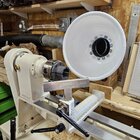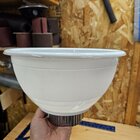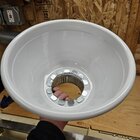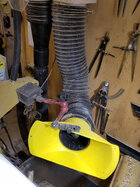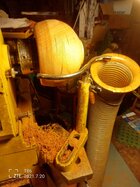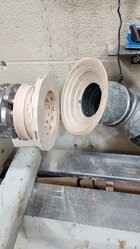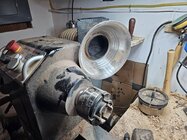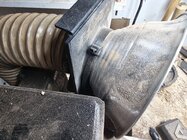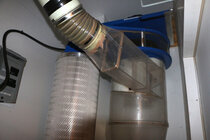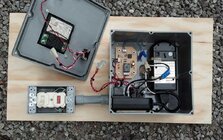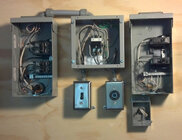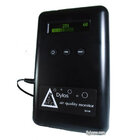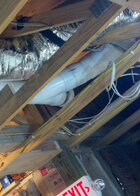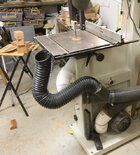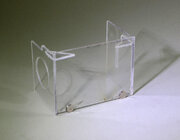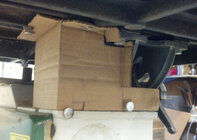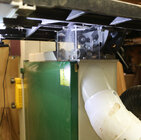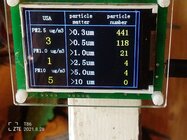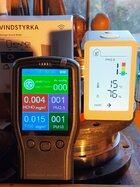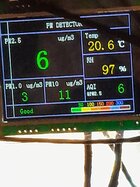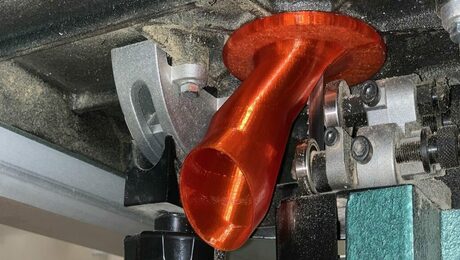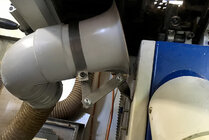I honestly think its more work to round on the lathe, as not only do you have to remove the wood from the blank...you also have to remove the dust and shavings from everywhere else! That includes dumping the collection bin, blowing off surfaces (which, at least in my case, still get dusty despite dust colleciton), cleaning or replacing air filters, sweeping and all the rest.
When I make bowl blanks for myself (or others) I ALWAYS cut them round on the bandsaw first. (I often even smooth the circumference with a disk sander and mark the centers.) Rounding helps in several ways - besides eliminating the extra shavings from the corners (not a primary issue for me), it allows the a larger blank to fit inboard on the lathe, important to some people with smaller lathes. Even more important, it is less intimidating to a beginner or student to start shaping a round edge rather than start by fighting with corners. And some don’t have the right tool and the experience that makes removing the corners easy.
I don’t often turn bowls myself, but I often make blanks for others, for example for students/visitors or to donate to our wood auction. I can testify that a flat, thick circle of mahogany will catch bidders attention and bring higher prices than the identical piece with the corners left on. (I also run such round blanks through my drum sander to let them see the true wood color, that there are no surface defects, and make the top and bottom flat and parallel.)
Note that when I cut large rectangular or square blanks that might be useful for bowls, I usually don’t cut them round until ready for use. That retains the option to decide to cut the big square up into smaller blanks, even for [gasp] spindles. (I have some thick planks of sapele and walnut over 30” wide - keeping them rectangular saves the decision for a future user - who knows, they might want to make a bunch of pens or bottle stoppers

Further, turning the wood away effectively makes it just pure waste! If you cut it on a bandsaw, then you have chunks of wood left that you could do something else with. Depending on the exact size of the bowl and the nature of the blank, you could potentially get a set of small items..
That one never occurred me. I might save corners if I had a shortage of small wood blanks but I pity the person who has to dispose of my wood when I kick off. Besides, big wood is not always completely dry so any corners saved for making things such as lidded boxes might need to be dried before use.
One minor benefit to cutting blanks round is it give me a supply of wedges good for stabilizing log sections when processing on the bandsaw. Also, for me, carrying a small trash can of offcuts out to the burn barrel is easier than dealing with the extra chips and emptying the big dust/chip collection drum under the cyclone DC.
All this depends, of course, on having a bandsaw. I don’t know how some work without one. A jigsaw could work if the wood isn’t too thick. A chainsaw can help with a secure way to hold the blank.
As for two other things mentioned in this thread:
1) I have never once cut the long corners off a spindle blank, regardless off the size - I see no advantage since it’s so quick to turn to round with a sharp skew.
2) I always drill a hole in middle of a blank, say a 1/4 or 3/8” dia. Since I plan the bowl shape and depth (often with sketches) before removing the first shaving, the hole is not to remove any wood but to define the depth. I drill a little less than my planned depth. Since I turn the outside first, the hole lets me know when I reach the planned depth without using calipers, depth gages, or other measuring things. My fingers and eyes let me know when the inside shape and wall thickness is “right”. Just the way I do things …
Also, related to the sketching and pre-planning, I’m not in the camp of letting the wood “speak to me” as I develop the form, When wood speaks to me it usually says “You moron, why’d you do THAT!”
JKJ

